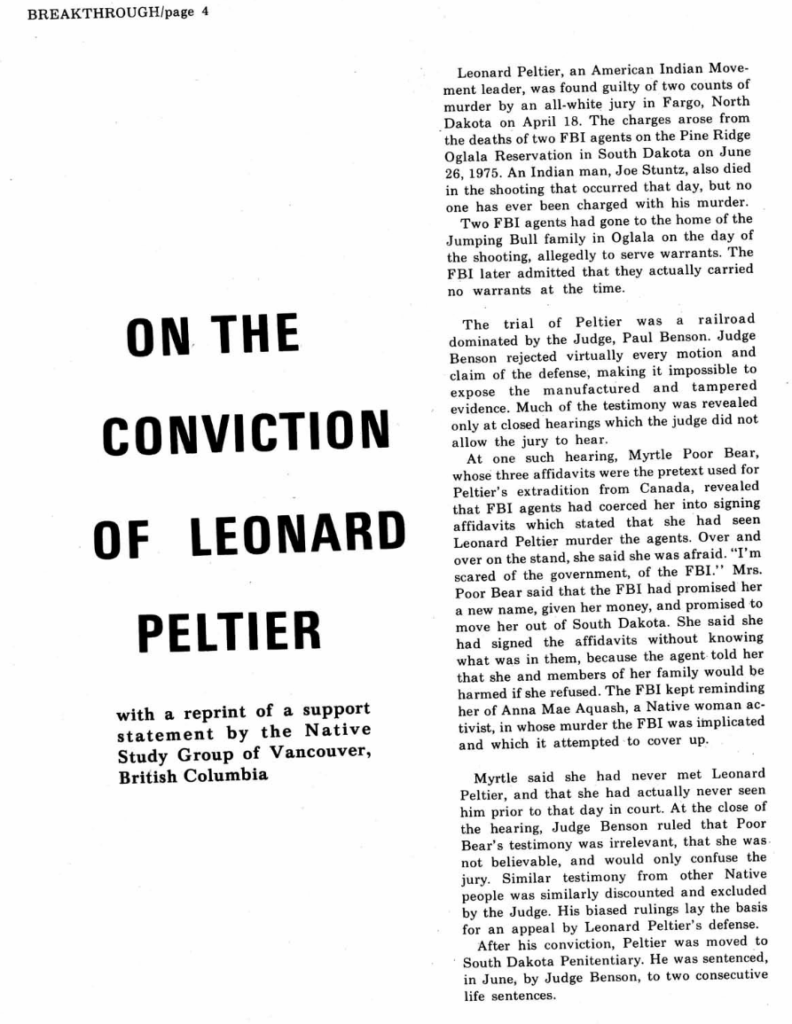Bikki Sunzawa Visits British Columbia
Vancouver, Skidegate (Haida Gwaii), ‘Ksan, and Gitanyow Canada / Turtle Island While on a trip to Hokkaido in the Summer of 1983, the University of British Columbia professor Douglas Sanders, who was studying Ainu activism, made the acquaintance of the renowned Ainu carver, painter, and sculptor Bikki Sunazawa. While Bikki’s art had featured Ainu themes up to this out, and both of his parents had been prominent in the Ainu community—his mother Peramonkoro was a textile artist and his father Ichitarō was an organiser—he was not fully comfortable with his Ainu identity at this time. Seeing this, Sanders invited Bikki to visit British Columbia and offered to introduce him to Indigenous artists there. Bikki arrived in Vancouver in Fall 1983, and had soon travelled all across the province. He worked with the legendary Haida artist Bill Reid in his workshop, before being taken up north to visit a Gitsxan art school in ‘Ksan, where he was impressed by the adzes used in carving there. On the way back, Bill Reid invited him to a potlatch at Skidegate on Haida Gwaii, the Haida people’s island homeland. Inspired, Bikki spent the rest of the trip preparing and presenting an exhibition, “Images of British Columbia”, composed of pieces darawing on the Indigenous Northwest Coast style. Thse included a painting, “Indian Dance A”, depicting the Haida potlatch, and the sculpture “The Watchman”, which he carved using an adze in the Gitsxan style. Bikki returned to Japan in January 1984 a changed and inspired man, who no longer felt uncomfortable with his Ainu identity but fully embraced it. Sources Dubreuil, Chisato O. (2004) From The Playground of the Gods: The Life & Art of Bikky Sunzawa
Recent Cultural Exchange with 4 arrows and Ainu people’s groups

This newsletter section informs its readers about the recent cultural exchanges with 4 arrows and Ainu delegations. It also speaks on future hopes to send six Nuxalk people back to Japan in the next fall to continue cultural exchanges. Citation: Noohalk News (October 1978). Recent Cultural Exchange with 4 arrows and Ainu people’s groups. No page numbers. Accessed through UBCIC archives. Leave a comment Cancel reply Logged in as Jacquelyn. Edit your profile. Log out? Required fields are marked * Message*
Letters: Ainu Oppression in Japan

This letter, written by Ainu member and Japanese prisoner, Naohiko Hashine, details a first-hand account of Ainu oppression and treatment in Japan. In it, they offer solidarity to Kootenay Nation and Natives in Canada. Citation: Akwesake Notes, vol. 8, no. 2 (1976). Letters: Ainu Oppression in Japan. Pg. 43. https://www.aidhp.com/files/original/954fcf314dc479751631e8b88edbd6a1.pdf Leave a comment Cancel reply Logged in as Jacquelyn. Edit your profile. Log out? Required fields are marked * Message*
Native Indians from Japan

This newsletter article informs band members about an Ainu delegation performing traditional dances and showcasing films about their culture on September 7, 1978. Citation: Lex’yem, August (1978). Native Indians from Japan. Pg. 35. Accessed through UBCIC archive. Leave a comment Cancel reply Logged in as Jacquelyn. Edit your profile. Log out? Required fields are marked * Message*
Ainu, Indian People share experiences

This newsletter section talks about an Ainu delegation which attended a feast and powwow of the Neskonlith Indian band. It mentions Tokuhei Narita and 24 other delegation members speaking about the lived realities of Ainu people in Japan, and links them to Indigenous experiences in Canada. Citation: Indians Today (Neskainlith Newsletter), (October, 1978). Ainu, Indian People share experiences. No page numbers. Accessed through UBCIC archives. Leave a comment Cancel reply Logged in as Jacquelyn. Edit your profile. Log out? Required fields are marked * Message*
Cultural Center Activity Report

This newsletter section talks about cultural exchanges to Japan. It shows that Emily Schooner was responsible for the coordination of the trips. Citation: Nuxalk News (February, 1979). Cultural Center Activity Report. No page numbers. Accessed through UBCIC archives. Leave a comment Cancel reply Logged in as Jacquelyn. Edit your profile. Log out? Required fields are marked * Message*
Japan’s Ainu native people group visits Canadian Natives at Bella Coola, B.C.

This article is about an Ainu delegation to Bella Coola that also visited Vancouver, Kamloops, Chase, and parts of the United States. Citation: Pederson, Bob. (February 23, 1979). Japan’s Ainu native people group visits Canadian Natives at Bella Coola, B.C. The New Canadian, n.p. Leave a comment Cancel reply Logged in as Jacquelyn. Edit your profile. Log out? Required fields are marked * Message*
B.C. visit is cultural link with original people

This article is about an Ainu dance troupe who made a visit to Campbell River and connected with the Kwakwaka’wakw Wei Wai Kum people there. Citation: New Canadian. (April 19, 1983) B.C. visit is cultural link with original people Leave a comment Cancel reply Logged in as Jacquelyn. Edit your profile. Log out? Required fields are marked * Message*
Red Power idea growing in Canada

This news article is a biography of the Red Power movement in Vancouver. It details their political inspirations, allyships, asperations for the future, and efforts thus far. Citation: Sherbrooke Daily Record (July 2, 1969). Red Power idea growing in Canada. Pg. 5. Found in https://numerique.banq.qc.ca/patrimoine/details/52327/2999289 Leave a comment Cancel reply Logged in as Jacquelyn. Edit your profile. Log out? Required fields are marked * Message*
On the Conviction of Leonard Peltier

This news article is a reprint of a statement on the conviction of Leonard Peltier by the Native Study Group of Vancouver, BC. Citation: Breakthrough: Political Journal of Prairie Fire Organizing Committee (June-July 1977). On the conviction of Leonard Peltier. Pg 4-8. Found in https://www.freedomarchives.org/Documents/Finder/DOC501_scans/Break/501.break.2.jun.77.pdf Leave a comment Cancel reply Logged in as Jacquelyn. Edit your profile. Log out? Required fields are marked * Message*
